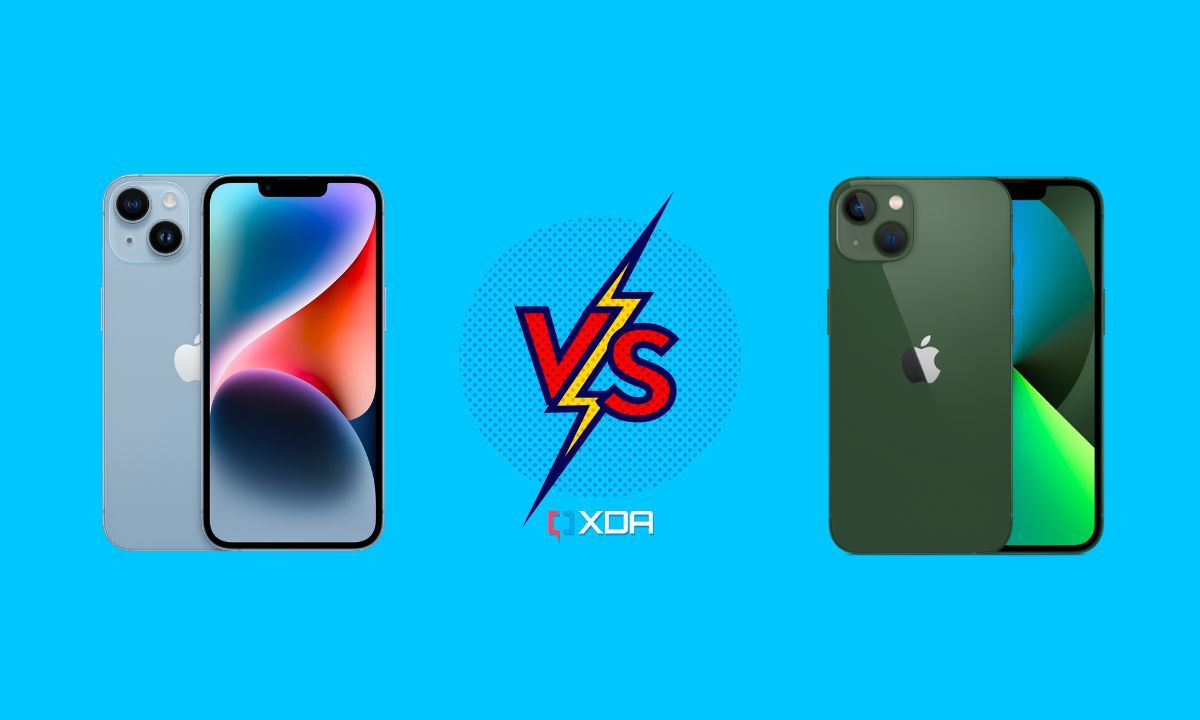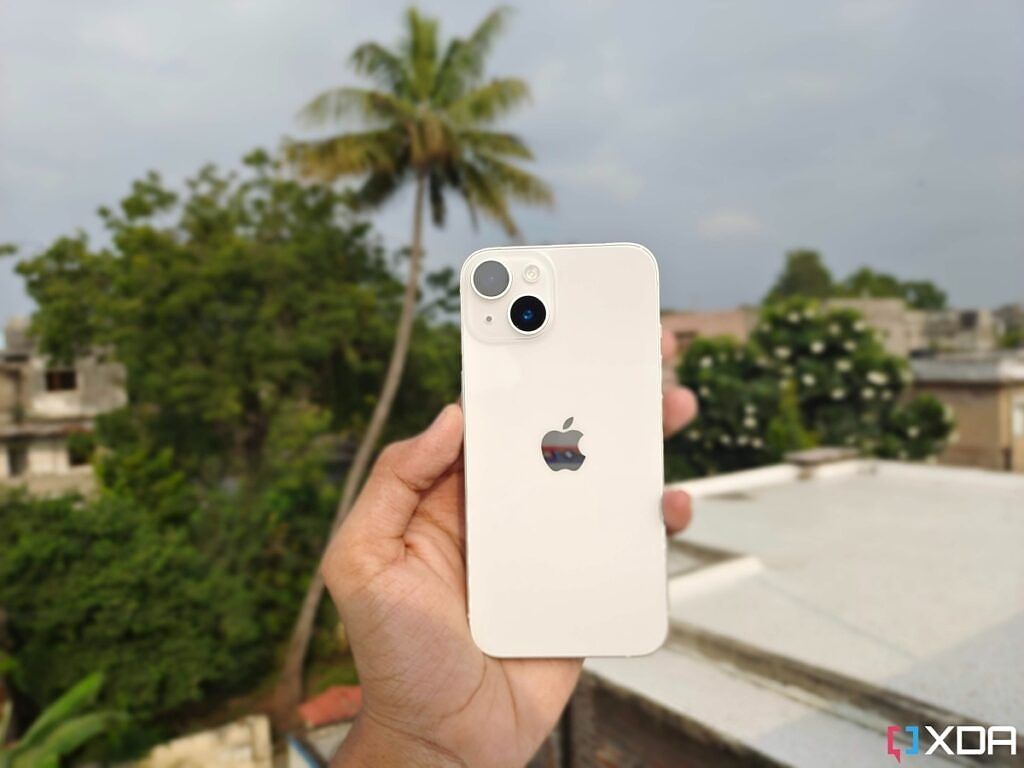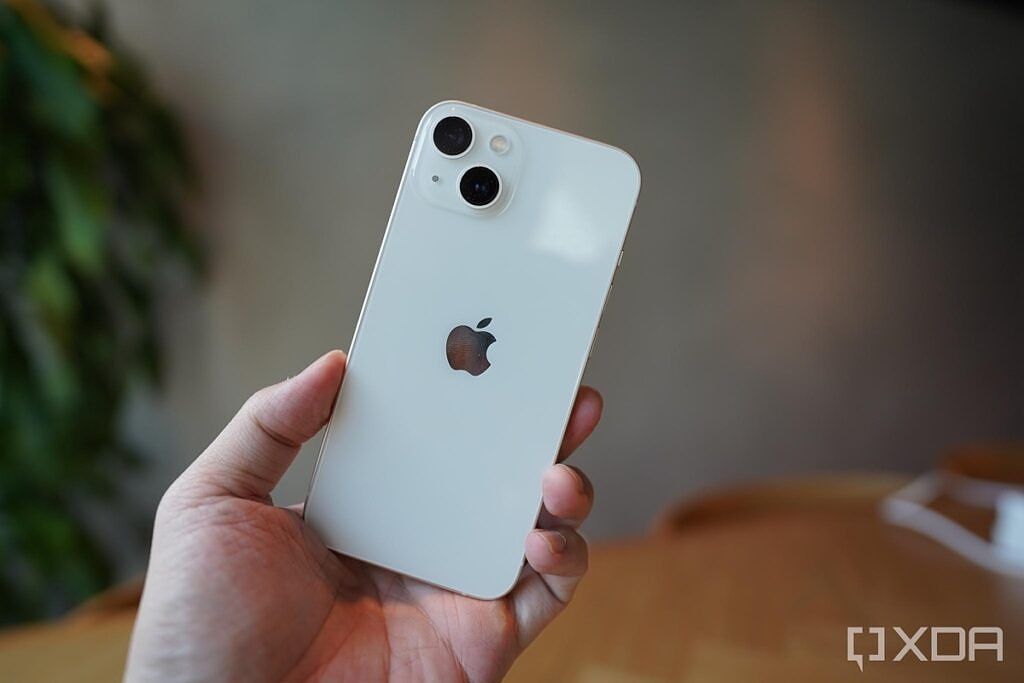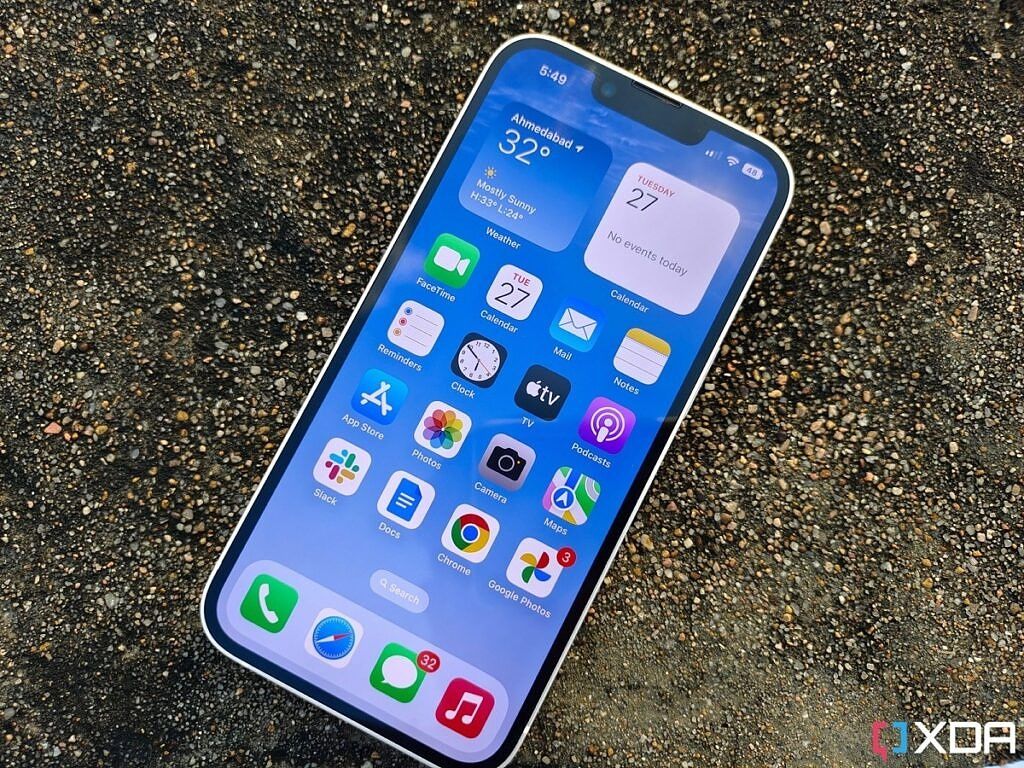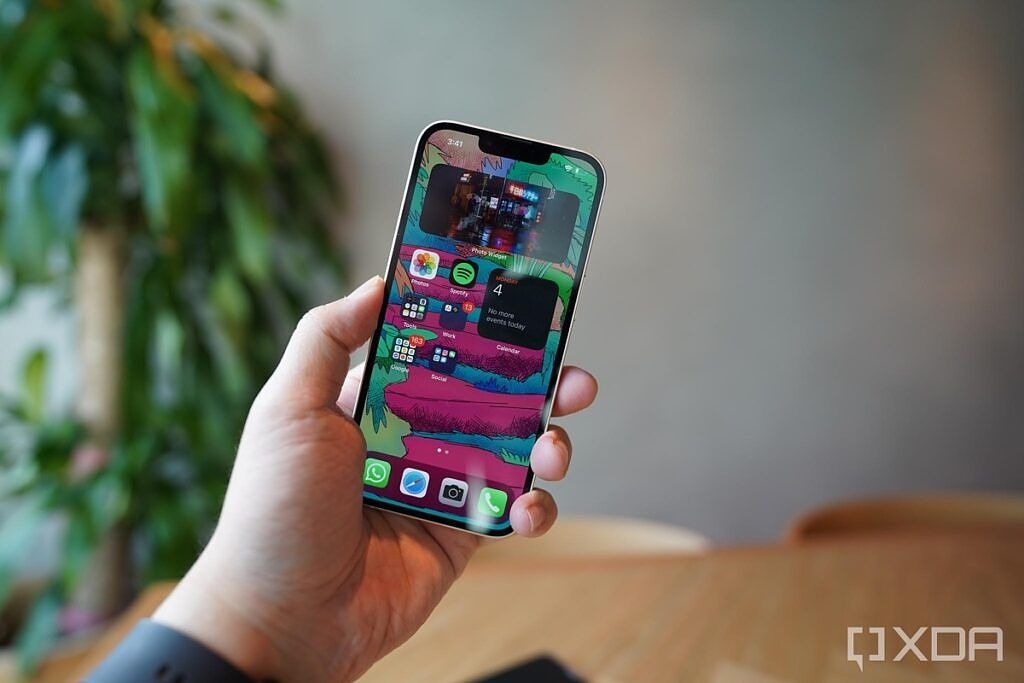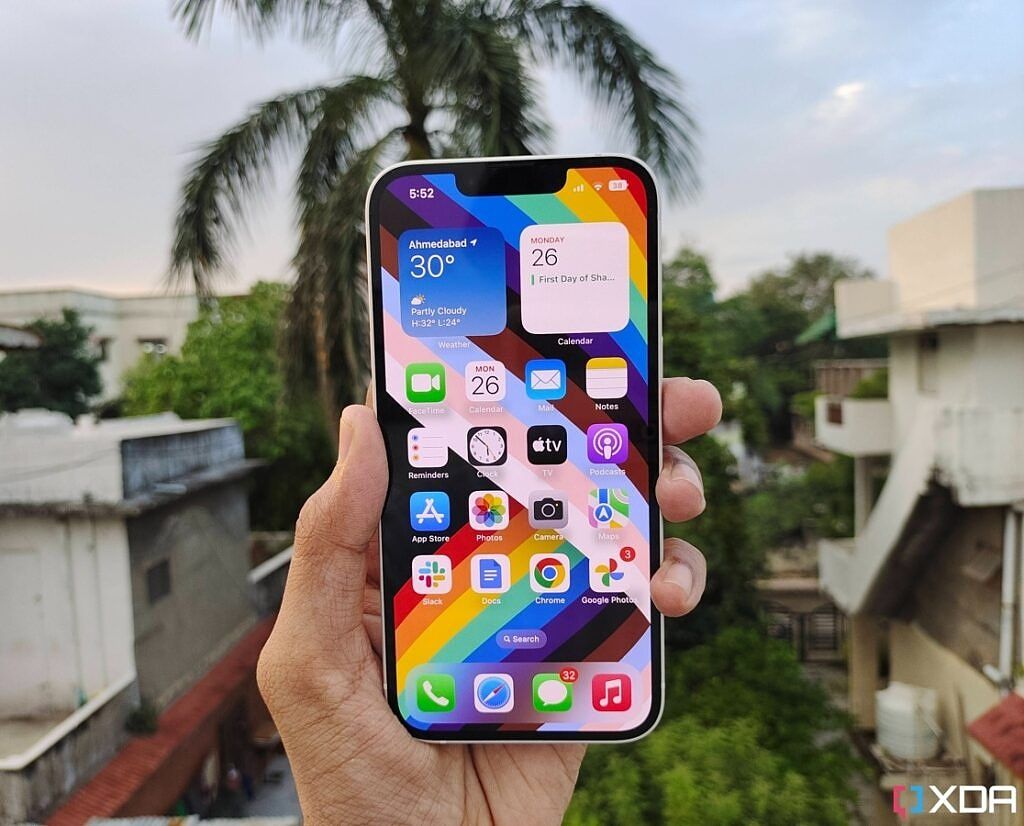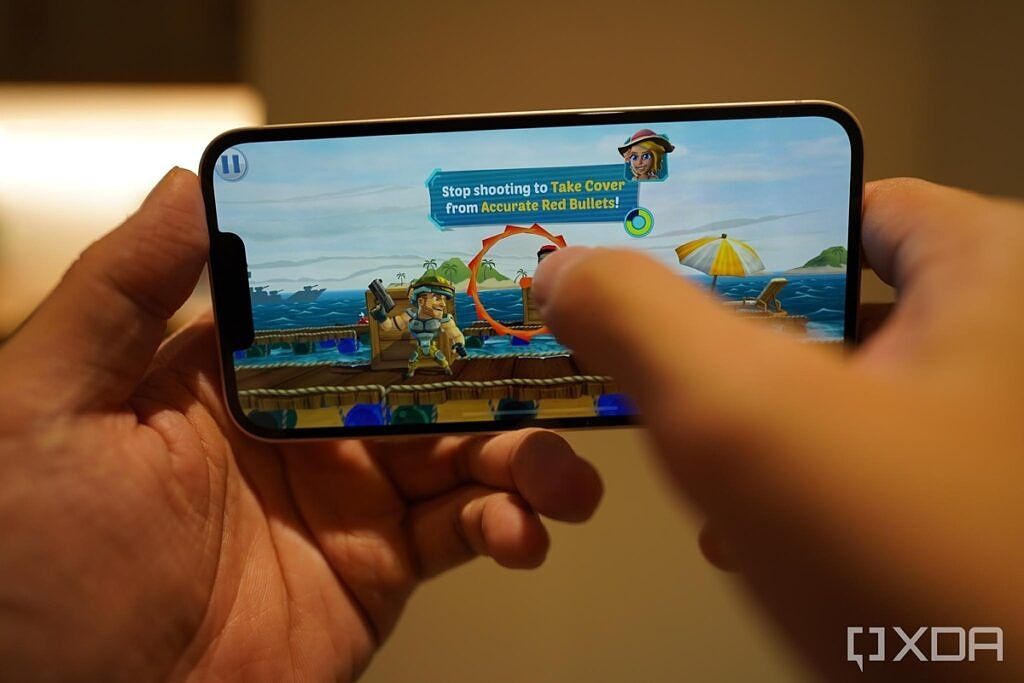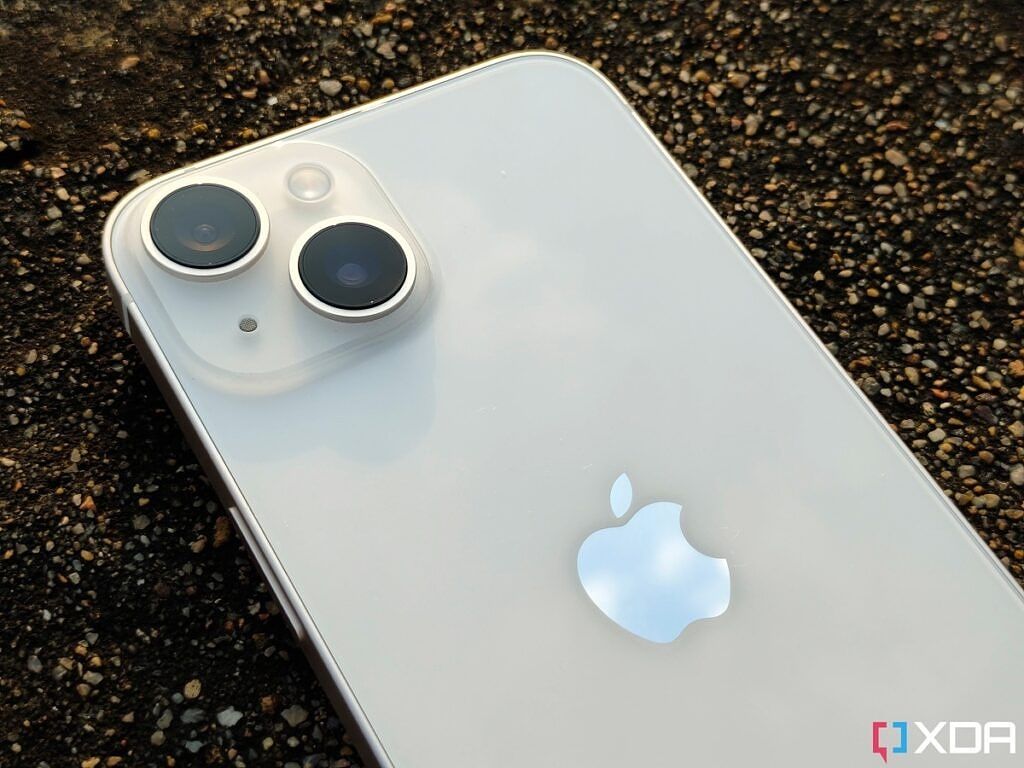Apple's new iPhone 14 series is now official and we got as many as four new models this year. But as we highlighted the difference between each iPhone in our iPhone 14 series explainer, the regular iPhone 14 doesn't bring a lot to the table compared to last year's regular iPhone 13. Is the new model actually any better than last year's iPhone? Let's find out in this iPhone 14 vs iPhone 13 comparison.
Navigate this article:
Apple iPhone 14 vs iPhone 13: Specifications
Here's a quick look at the specifications of each phone to find out what they bring to the table:
|
Specification |
iPhone 14 |
iPhone 13 |
|---|---|---|
|
Build |
|
|
|
Dimensions & Weight |
|
|
|
Display |
|
|
|
SoC |
|
|
|
Storage |
|
|
|
Battery & Charging |
|
|
|
Security |
Face ID |
Face ID |
|
Rear Camera(s) |
|
|
|
Front Camera(s) |
12MP f/1.9, autofocus with Focus Pixels |
12MP f/2.2, autofocus with Focus Pixels |
|
Port(s) |
Lightning connector |
Lightning connector |
|
Audio |
Stereo speakers |
Stereo speakers |
|
Connectivity |
|
|
|
Software |
iOS 16 |
iOS 16 |
|
Other Features |
|
|
Design and display
The iPhone 14 and the iPhone 13 have a lot in common and it all starts with the design. They both look the same, with the same flat aluminum rails and roughly the same dimensions. The new iPhone is a hair thicker and heavier than the last year's model, but you won't immediately notice it even while holding both phones side-by-side. They both are so identical that you'd be hard-pressed to tell the difference between the two if it wasn't for three new colors. The iPhone 14 comes in a new Blue, Purple, and a slightly lighter shade of Product Red. We reviewed both phones in Starlight color and they look exactly the same as you can tell by looking at the images.
While the iPhone 14 looks identical to the iPhone 13 from the outside, there's one fundamental design difference between the two. As revealed by iFixit's teardown, Apple has entirely redesigned the internal architecture of the iPhone 14, making it easier to remove the back glass back for repairs. This makes the iPhone 14 the most repairable iPhone to date. This isn't going to change the way you use the phone on a day-to-day basis, but it makes the new iPhone that much easier to hold on to for a long time. The internal design differences don't affect the durability, so they both use the same materials and carry the same IP68 rating.
The design is not the only thing that's similar in this comparison because the iPhone 14's screen -- for all intents and purposes -- is identical to iPhone 13's display. This means it's still a 6.1-inch OLED panel with a 2532 x 1170p resolution and a standard 60Hz refresh rate. The 60Hz refresh rate isn't necessarily a deal-breaker, especially if you're coming from an older iPhone, but it's definitely an area in which the iPhone is overdue for an update. So if you were expecting to get a higher refresh rate display with the new iPhone 14 model, then that's sadly not a part of the specs sheet. You'll still have to pony up for the iPhone 14 Pro models.
Internal hardware and cameras
Both phones in this comparison are powered by Apple's A15 Bionic chip, but they aren't exactly the same. The A15 Bionic used in the iPhone 14 is the A15 Bionic from the iPhone 13 Pro, meaning it features an extra GPU core. The A15 Bionic inside the iPhone 14 may also benefit from the new internal design to dissipate heat better, so that's worth considering too. It is, however, not going to make a significant difference in day-to-day usage. You'll probably notice a slight difference in performance in benchmarking apps, but that's pretty much it.
There are a couple of hardware features in the iPhone 14 that are worth considering though. The first is Crash Detection which uses a new “high dynamic range” gyroscopic sensor and a high-g accelerometer to detect if you've been in a crash. This particular feature will trigger a prompt asking you if you’re okay and will call emergency services if you don’t respond in a certain amount of time. Since it takes advantage of the new sensors, it's unlikely that older iPhones would be able to support Apple's Crash Detection feature.
Also new to the iPhone 14 series is the Emergency SOS feature. It's essentially a service that'll help you get a message out to emergency responders by communicating via satellite. Apple says the iPhones use some custom internals and software to get the message out in areas without cell coverage. We don't expect this feature to work on older iPhones. These are some great features but are they enough to warrant the higher cost? That's something you'll have to decide for yourself.
Moving on to the battery life, Apple is quoting a small increase in iPhone 14's battery performance. According to the company, the new iPhone 14 will get up to 20 hours of video playback versus 19 hours on the iPhone 13. How does that translate to real-world usage? Well, the iPhone 14 delivered an all-day battery life when we tested it for our review. But that's also true for the iPhone 13, which lasted us an entire day when we tested that for our review last year. Just like the battery life, the charging speed on both phones is also the same and it's painfully slow. It'll take you roughly two hours to go from 0 to 100 percent using a 20W charger, so it's still nowhere close to matching the fast charging speeds offered by many Android phones.
As for the optics, the iPhone 14 brings some upgraded hardware compared to the regular iPhone 13 model. The new iPhone 14 borrows the iPhone 13 Pro's main camera, with a bigger sensor, larger pixels, and a faster f/1.5 aperture. The ultra-wide camera remains the same as the one found on the iPhone 13, but the selfie camera gets a wider aperture too. Pair these hardware changes with Apple's new Photonic Engine software trick, and you get better low-light camera performance. Are you going to see a drastic improvement in camera performance with the iPhone 14 compared to the iPhone 13? Probably not.
We don't have the same set of shots captured on both phones for a side-by-side comparison, but we're leaving the photo samples captured on both devices for you to get a better understanding of what to expect.
Apple iPhone 14 camera sample:
Apple iPhone 13 camera sample:
iPhones are known to deliver impressive video performance in general and that's true for both iPhones in this comparison too. All three cameras on both the iPhone 13 and the iPhone 14 are capable of shooting 4K videos at 60fps. The iPhone 14, however, gets a couple of video features that we think are fun to play with. The Cinematic mode that debuted on the iPhone 13 is now available in 4K at 30fps and 4K at 24fps on the iPhone 14. Apple also added a new Action mode that lets you capture super-smooth hand-held videos.
All things considered, we think both the iPhone 13 and the iPhone 14 deliver impressive photos and videos with their cameras. The addition of new features certainly makes the iPhone 14 more fun to shoot with but they're both on a level playing field when it comes to the overall quality.
Apple iPhone 14 vs iPhone 13: Which one should you buy?
Apple's iPhone 14 is priced at $800 in the US, and we think it's a great phone for the price. But it only brings a handful of upgrades over the iPhone 13, which Apple is still selling for $100 cheaper. So which one should you buy? Firstly, you should NOT upgrade to the iPhone 14 if you already have an iPhone 13. There is no compelling reason to do so as you won’t be missing out on anything major. You may also find some good deals for the iPhone 13, making it cheaper than it already is.
That's also true for those who are coming from an older iPhone or switching from an Android device for the first time. If you don't care about the new features like Crash Detection, Emergency SOS, and the very slightly better cameras, then we think you should save $100 and get the iPhone 13 instead. It's still an excellent phone that runs the same iOS 16 software and performs well. You also get to use physical SIM cards with the iPhone 13, which by itself is a compelling reason for many to pick the iPhone 13 over the new model in the US. Hence, to us, it makes greater sense to pick the iPhone 13 over the iPhone 14 and save yourself some money in the process. The latest is often not the greatest value, and the iPhone 13 and 14 are the best examples of this sentiment.
That's not to say the iPhone 14 is a bad phone though. If you're coming from iPhone 11 or older and want all the latest features, then we think you should consider buying the iPhone 14. It's an incremental upgrade over the iPhone 13, but it's worthwhile, especially when you consider the new features and refinements in the store. Both phones run Apple's iOS 16 software, but the iPhone 14 brings it out of the box and is likely to have slightly longer software support too. If you plan to hold your phone for three or more years, you also stand to benefit from the redesigned internals just in case you have to replace components like your battery or the back panel or display. The iPhone 14 costs $100 more but you can always stop by our best iPhone 14 deals page to see if you can save some money on your purchase and splurge on one of the best cases instead.
-
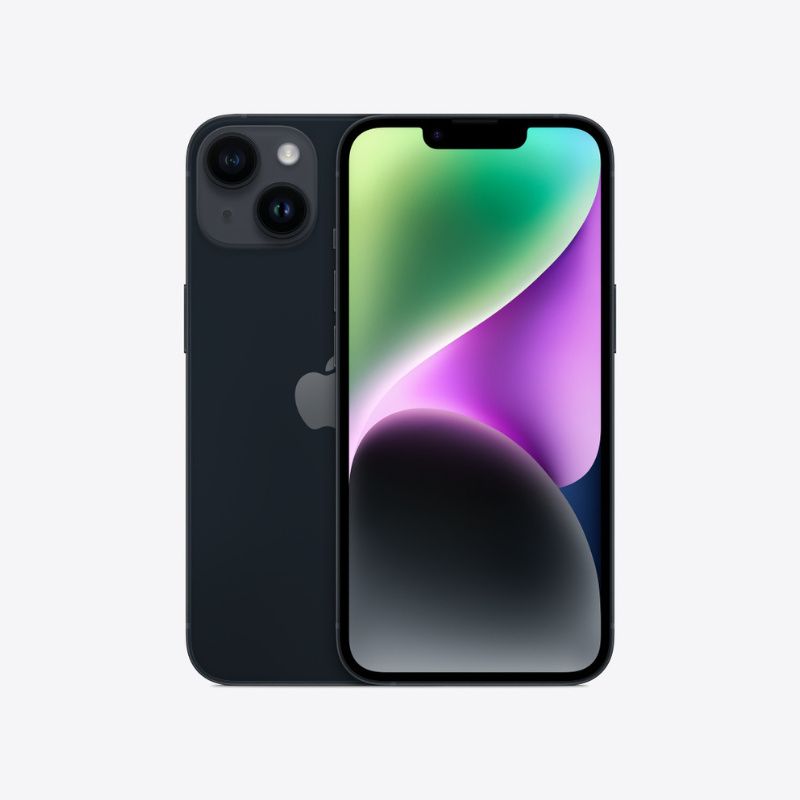
Apple iPhone 14
The iPhone 14 is an incremental upgrade over the iPhone 13, but it represents the best of what Apple has to offer.
-
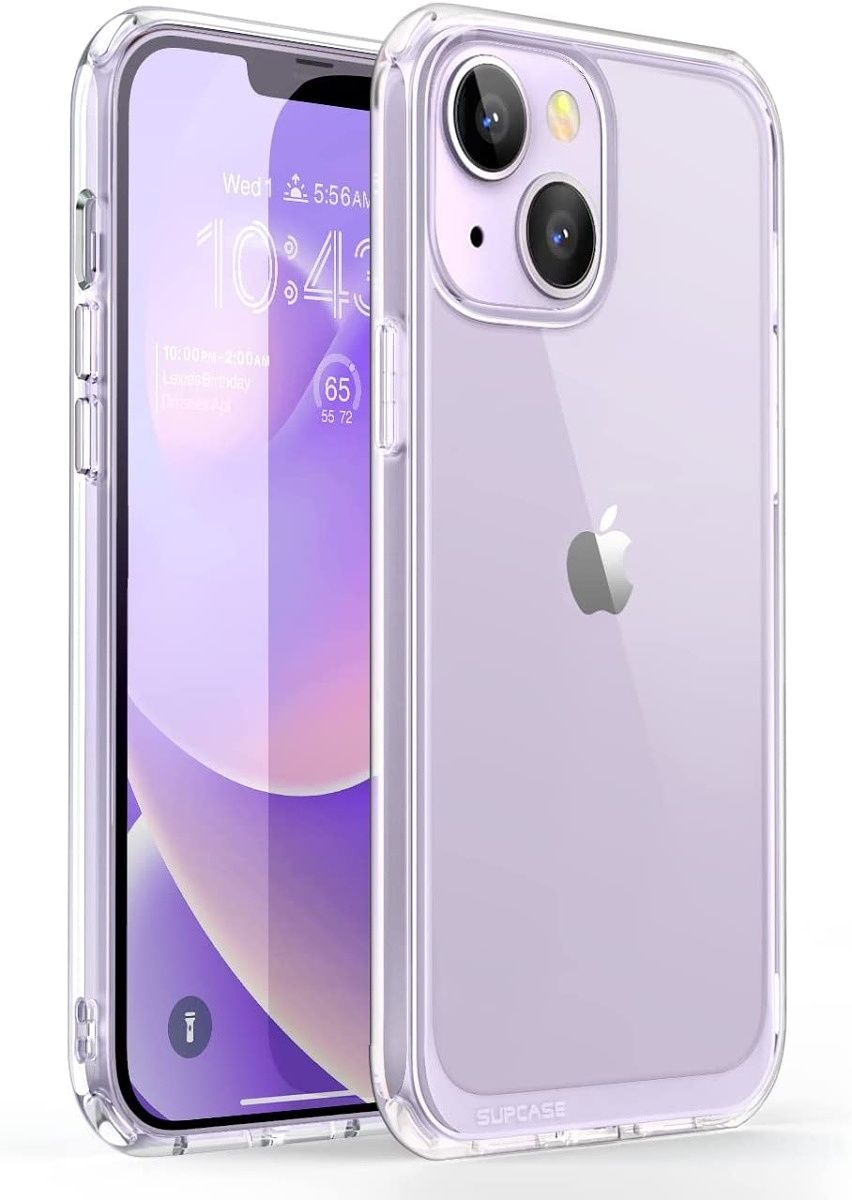
Supcase Unicorn Beetle Style Case (Sponsored)
This case offers three different color options to choose from, in addition to a minimalistic, slim build.
So which iPhone are planning to buy in 2022? Let us know by dropping a line in the comments below!

